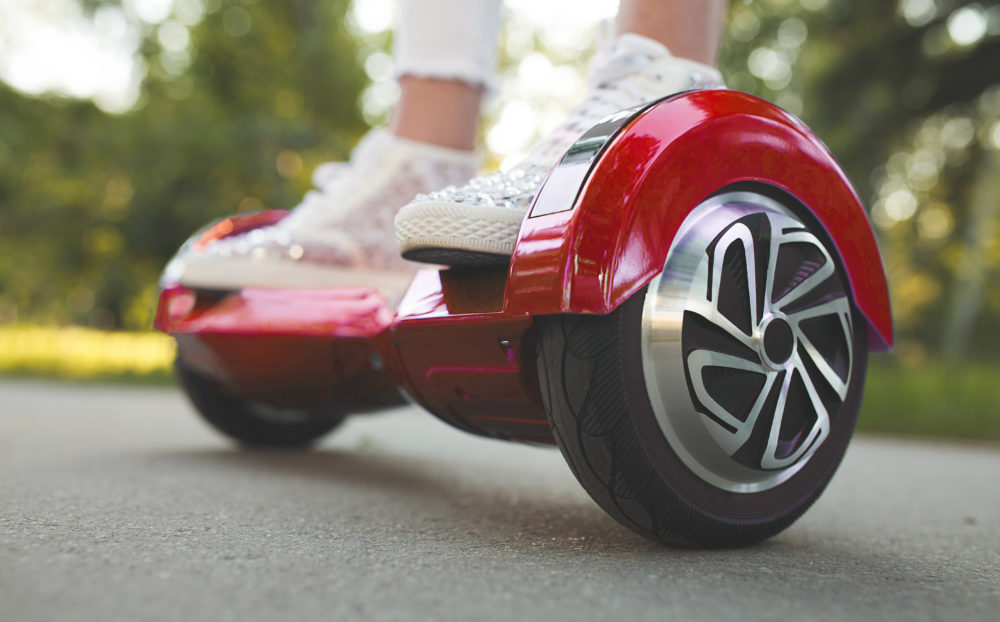Hoverboard Falls and Injuries Have Resulted in 27,000 Emergency Room Visits for Children: Report

Although concerns about the risk of battery fires associated with hoverboards has been the focus of most media attention since the self-balancing scooters hit the market, new research highlights the serious risk of falls and injuries.
Hoverboard accidents have sent nearly 27,000 children in the U.S. to hospital emergency rooms nationwide, only two years after the popular toys were introduced by several different manufacturers.
In a study published this month by the medical journal American Academy of Pediatrics, researchers linked hoverboards to tens of thousands of fractures, burns and other fall injuries among those 18 and younger that resulted in emergency room visits.

Did You Know?
Millions of Philips CPAP Machines Recalled
Philips DreamStation, CPAP and BiPAP machines sold in recent years may pose a risk of cancer, lung damage and other injuries.
Learn MoreResearchers from several New York medical centers collected data from the U.S. Consumer Product Safety Commission’s (CPSC) National Electronic Injury Surveillance System (NEISS), which is designed for collecting injury data associated with consumer products across the nation.
The data indicates white males between the ages of 10 and 14 years old were among those most injured by hoverboards. Researchers further found the most common injuries were fractures, which accounted for 40% of all emergency room hoverboard injuries. Approximately 17% of accidents involved contusions, and 13% resulted in a sprain or strain diagnosis.
The most common areas of the body injured by hoverboard falls were found to be to the forearms, wrists, head and ankles, with the forearms and wrist having the highest frequency of fracture injuries. Head injuries accounted for 14% of hospital admissions that required actual admission and requiring observation.
Initially after the self-balancing scooters became the hottest toy craze of the 2015 holiday season, hoverboard fires and reports involving problems with lithium-ion battery packs overheating was the primary safety concern associated with the devices.
According to the CPSC, the agency is aware of more than 250 hoverboard incidents related to fires or overheating since 2015, resulting in at least 13 burn injuries, three smoke inhalation injuries, more than $4 million in property damage, and the death of at least two children who were caught in a house fire in Harrisburg, Pennsylvania after a hoverboard overheated and ignited.
As children nationwide were wishing for new hoverboards under the Christmas tree, the U.S. Department of Transportation’s Pipeline and Hazardous Material Safety Administration (PHMSA) released a warning in December 2015, warning about the risk that the batteries may spontaneously overheat and catch on fire.
The U.S. Postal Service banned the boards from air transport, expressing concerns that they might burst into flames and bring down a plane.
By the end of 2015, the CPSC began investigating hoverboard safety, following reports of at least 12 fires and more than 30 hospitalizations from burns and trauma injuries. The warning resulted in distributors such as Amazon, Target, Wal-Mart and Overstock.com to stop selling certain designs of the hoverboard that include lithium-ion battery assemblies.
The CPSC has expressed its concern with the high demand for the products and its struggle with the ability to vet which products may pose increased overheating and fire risks due to where the products have been shipped in from. Many of the hoverboards are manufactured in the southern Chinese region of Shenzhen and Zhejiang, and are not registered or regulated. The CPSC warns that many Chinese hoverboard manufacturers are fly-by-night type businesses and may be open one day and gone the next, leaving consumers stranded with hazardous products that won’t be remedied.
Several lawsuits have been filed against the manufacturers and distributors of hoverboard products, including one of the most recent naming Amazon as the defendant in a hoverboard class action lawsuit.
Between overheating, fire and fall hazard injuries related to hoverboards, the CPSC has created a hoverboards information center page for consumers to visit that provides instructions on how to never charge a hoverboard lithium-ion battery unattended and how to protect your home against house fires.
Get more articles like this sent directly to your inbox.
"*" indicates required fields




0 Comments